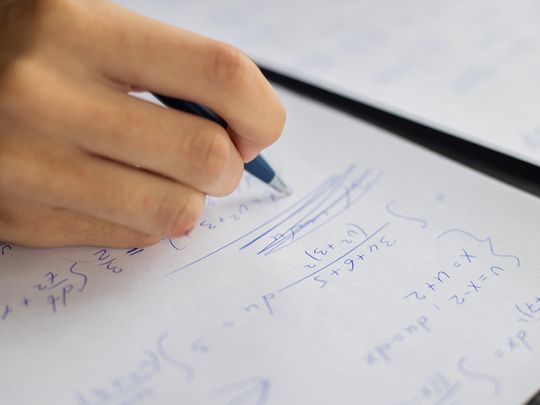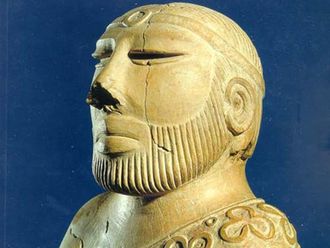
Is 3/5 bigger than 2/3? How quickly you’re able to answer this question may have less to do with your love of maths, and more to do with your native language.
Click start to play today’s Crossword, where the science behind this theory ‘adds’ up.
Math anxiety is common around the world. In fact, a May 2022 study published in the journal Education Sciences, found that a whopping 93 per cent of Americans, ranging from all age groups, suffer from some degree of math anxiety.
But a growing body of research is discovering that the words that we use for different numbers, based on our native language, can affect how quickly we learn to count and understand basic concepts, like fractions.
It may be why children in China are about a year ahead of their American counterparts, in their capacity to count higher numbers, according to a May 2023 BBC Future report. There are no irregularities in the Chinese counting system. If you memorise the word range of 1 to 10, you can easily infer the rest. For instance, one is yi, two is er, and 10 is shi, so 11 is shi yi (ten-one), 12 is shi er, and so on.
Psychologists call this consistency ‘linguistic transparency’ – and it’s been shown to aid children’s first steps into numeracy.
Compare this to English, where there are no systematic rules for why numbers are called what they are. After 10, you have 11, 12 and then the ‘teens’, 13, 14, 15 and so on. If you didn’t know 11 is ‘eleven’, you might have called it ‘one-teen’. Multiples of 10 take on different patterns in English (‘twenty’, ‘thirty’ etc.), so it can take children a while to learn these words, and understand how they’re different from each other. For instance, ‘thirteen’ is not ‘thirty’ and this might take a kid a while to understand.
In French, it becomes even more complicated with the vigesimal structure, where, after 60, you have to count numbers based on multiples of 20. The French word for 71, for instance, is soixante-et-onze (sixty-and-eleven), and 99 is a mouthful: quatre vingt dix neuf (four-twenty-nineteen).
Apart from the influence of language on counting, there’s also evidence it impacts how quickly children learn to use fractions. In Korea, for instance, fractions are clear and explicitly spelled out. For instance, 1/3 is sam bun ui il, which means ‘of three parts, one’, and 3/7 is chil bun-ul sam, which means ‘of seven parts, three’. In English on the other hand, you’d say ‘one-third’ or ‘three-sevenths’, which doesn’t make the relationship between the numerator and denominator immediately obvious. A December 1999 study in the Journal of Experimental Child Psychology found that this style of phrasing gives young Koreans a slight advantage in matching named fractions to diagrams that illustrate the relevant quantity – even before they received formal lessons on fractions.
Interestingly, our success in maths isn’t just based on our talent for it, or our ability to grasp mathematical concepts. There are lots of factors that impact how quickly we’re able to learn it, so if you find yourself struggling with maths, take heart and be proud of how much you’ve achieved, especially if your language isn’t helping make it easy for you!
What do you think of these studies? Play today’s Crossword and tell us at games@gulfnews.com.








